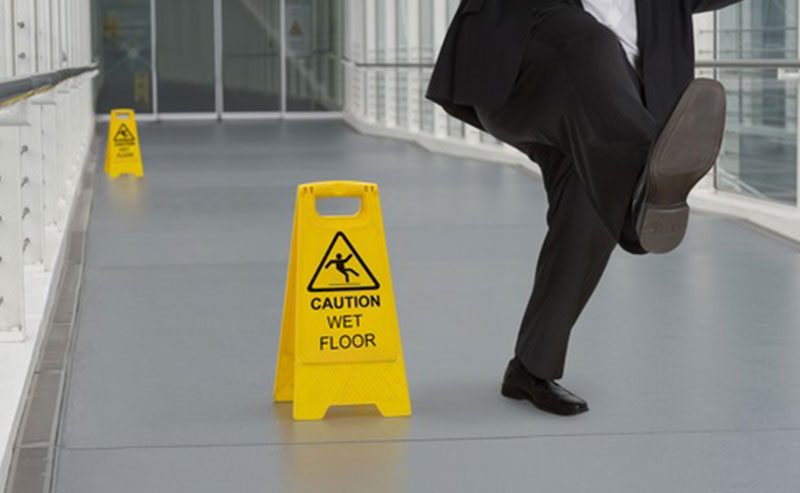Slip-and-fall accidents can cause more than embarrassment – a lot more. According to the Brain Injury Institute, more than eight (8) million people are injured annually from slip-and-fall accidents. In fact, such injuries are a leading cause of death among our senior population. In this article, we’ll talk about perhaps one of the most serious results from a slip-and-fall accident – traumatic brain injuries (TBI).
Understanding Traumatic Brain Injuries
According to the Center for Disease and Control, slip-and-fall accidents are the primary cause of TBI in the U.S. Children under 14 and the elderly are at most risk for experiencing such injuries.
There are four distinct regions in our brains (cerebrum, cerebellum, brain stem and limbic system). Each are responsible for controlling a specific action within our bodies. So when one of those regions is injured, its function may be severely impacted.
Identifying Symptoms of Traumatic Brain or Head Injury
No two cases of TBI are the same. As such, symptoms will most likely vary from person to person. The most common telltale signs of TBI or head injuries include:
- Blurred vision
- Difficulty speaking or communicating overall
- Severe headaches or migraines
- Nausea
- Drowsiness or lethargy
- Ringing in the ears
- Erratic emotional control
Types Of Traumatic Brain Injuries
Generally speaking, there are three levels of severity in diagnosing TBI:
- Mild TBI – Often referred to as a concussion, symptoms for this form of TBI typically clear up soon after the accident
- Moderate TBI – Typically causing unconsciousness for 30 minutes or more with symptoms lasting for weeks or even months
- Severe TBI – Consciousness is lost for more than 24 hours, and the symptoms associated with TBI are much more intense
Common Causes of Slip-And-Fall Accidents
While there are a number of contributing factors that can lead to slip-and-fall accidents, the most common ones are:
- Weather conditions – property owners are responsible for taking action to ensure surfaces on their property are safe when precipitation or other forms of hazardous weather move into the area
- Dangerous surfaces – wet floors, sidewalk defects, torn or loose carpeting and structurally unsound staircases are good examples
- Nursing home negligence – because the elderly are particularly susceptible to slip-and-fall accidents, nursing home personnel need to constantly monitor passageways clear and safe
- Improper workplace gear – employers are responsible to make sure their workers have the right safety gear to effectively do their job
Barber & Associate Can Help You
If you’ve experienced injuries sustained from a slip-and-fall accident, you may be entitled to compensation to cover any medical bills, lost wages, etc. We encourage you to contact us at Barber & Associates by calling 907-276-5858 for a free consultation.
